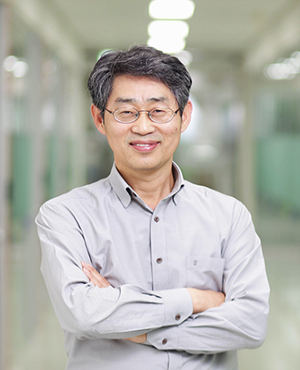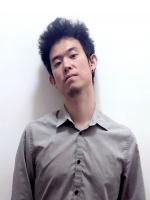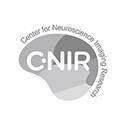People
People Search
Categories
Directory

- Seong-Gi Kim
- Director
- MR biophysics, Neuroimaging, System neuroscience
- Department of Biomedical Engineering
- seonggikim

- https://fbrainmapping.weebly.com/
- brain mapping, MRI, neuroscience, neurovascular
- Information
Functional Brain Mapping Lab
Introduction
Magnetic resonance imaging (MRI) is a very powerful non-invasive tool to visualize brain morphology, physiology, function and connectivity. However, MRI originates from water protons, thus its biological source is not straightforward. Especially, widely-used blood oxygenation-level dependent (BOLD) fMRI relies on the presumably close relationship between neural activity and hemodynamic responses. Therefore, it is crucial to understand underlying basis of fMRI for proper quantification and determining ultimate limits. Also MRI can image entire brain repeatedly from anesthetized to awake animals, and its readout can be combined with diverse manipulations such as sensory, electrical, chemical and optogenetic stimulation, and pharmacological interventions for answering system-level neural circuits. To obtain multimodal functional neuroimaging data, animal MRI facility (9.4 T and 15.2 T Bruker) is accompanied with a neurophysiology laboratory with electrophysiology, intrinsic optical imager, laser Doppler flowmeter, etc. Our research lab consisting of MR scientists and system neuroscientists focuses on three inter-related research themes; a) the development of physiological and functional MRI techniques, b) the investigation of biophysical and physiological sources of MRI signals (functional MRI, perfusion, diffusion, chemical exchange MRI), and c) the application of neuroimaging techniques to systems neuroscience research.
Selected Recent Publications
1. Jin T, Wang P, Zong XP & Kim SG, “MR imaging of the Amide-Proton Transfer effect and the pH-insensitive Nuclear Overhauser Effect at 9.4 T”, Magnetic Resonance in Medicine 69: 760-770, 2013.
2. Vazquez AV, Fukuda M, Crowley JC & Kim SG, “Neural and hemodynamic responses elicited by forelimb and photo-stimulation in Channelrhodopsin-2 mice: Insights into the hemodynamic point-spread function”, Cerebral Cortex 24(11): 2908-2919, 2014.
3. Jin T, Mehrens H, Hendrich KS & Kim SG, “Mapping brain glucose uptake with chemical exchange-sensitive spin-lock magnetic resonance imaging”, Journal of Cerebral Blood and Metabolism 34(8): 1402-1410, 2014.
4. Iordanova B, Vazquez AL, Poplawsky AJ, Fukuda M, and Kim SG, “Neural and hemodynamic responses to optogenetic and sensory stimulation in the rat somatosensory cortex”, Journal of Cerebral Blood and Metabolism 35(6): 922-932, 2015.
5. Poplawsky AJ, Fukuda M, Murphy M & Kim SG, “Layer-specific fMRI responses to excitatory and inhibitory neuronal activities in the olfactory bulb”, J of Neurosci 35(46): 15263-15275, 2015.

- Seok-Jun Hong
- Associate Professor
- Computational neuroimaging, Developmental disorders, biophysical brain network modeling
- Department of Biomedical Engineering
- hongseokjun

- http://combinelab.net
- Information
Computational Brain Imaging and Network Modeling Lab
(COMBINE LAB)Introduction
We are the research group of Computational Brain Imaging and Network Modeling (COMBINE) at IBS Center for Neuroscience Imaging Research (CNIR) and Sungkyunkwan University (SKKU) in South Korea. “COMBINE” is not a simply eye-catching acronym for the lab title but represents the main research perspective we are pursuing. Using diverse neuroimaging and computational modeling approaches, our research aims at identifying system-level principles for large-scale organization of the brain and its neurodynamics in both typical and atypcial conditions. In performing the research, we are seeking to combine multi-method (connectomics, computational modeling), multi-modal (structure and function), and multi-scale (circuit-level, large-scale network and behhaviors) analytical approaches to understand brain working principles and capture individual variations in complex behavioral and clinical outcomes. Based on these research tools, ultimately we are targeting to develop effective imaging-based biomarkers for normal cognition and clinical diagnosis.
Selected Recent Publications
1. Hong SJ, Vogelstein J, Gozzi A, Bernhardt BC, Yeo B.T.T, Milham MP, Di Martino A, Towards Neurosubtypes in Autism. Biological Psychiatry 2020
2. Hong SJ, Vos de Wael R, Bethlehem R, Lariviere R, Paquola C, Valk SL, Di Martino A, Milham MP, Smallwood J, Margulies D, Bernhardt BC. Atypical functional connectome hierarchy in autism. Nature Communications. 2019, 10 (1):1022
3. Hong SJ, Lee HM, Gill RS, Bernhardt BC, Bernasconi N, Bernasconi A. A connectome-based mechanistic model of epileptogenic focal cortical developmental malformations. Brain. 2019, 142 (3):688-699

- Seng Bum Michael Yoo
- Assistant Professor
- Cognitive neuroscience, Neurophysiology, Continuous and interactive behavior
- sbyoo.ur.bcs@gmail.com
- http://myoolab.com
- Information
Introduction
Neural Basis of Continuous Behavior (NBCB) lab aims to understand humans and animals' internal processes while making continuous and interactive decisions between multiple agents. We use human psychophysics, animal electrophysiology, and computational models to address our scientific question.
Specifically, we want to address normative behavior and neural dynamics of:
prediction and planning
information factorization and generalization across context
social inference and learning
by using the real-time navigation/foraging/hunting task paradigm.
We are open to incorporate methods from various fields, including artificial neural networks and computational ethology (but not limited to).
Selected Recent Publications
1. Yoo, S.B.M., Hayden, B.Y., and Pearson, J.M. (2021). Continuous decisions. Philosophical Transactions Royal Soc B 376, 20190664.
2. Yoo, S. B. M., Tu, J. C., & Hayden, B. Y. Multicentric tracking of multiple agents by anterior cingulate cortex during pursuit and evasion. Nature Communication (2021, accepted)
3. Yoo, S.B.M., Tu, J.C., Piantadosi, S.T., and Hayden, B.Y. (2020). The neural basis of predictive pursuit. Nature Neurosci 23, 252–259.
4. Yoo, S.B.M., and Hayden, B.Y. (2020). The Transition from Evaluation to Selection Involves Neural Subspace Reorganization in Core Reward Regions. Neuron 105, 712-724.e4.
5. Yoo, S.B.M., and Hayden, B.Y. (2018). Economic Choice as an Untangling of Options into Actions. Neuron 99, 434–447.

- Sungshin Kim
- Assistant Professor
- Department of Cognitive Sciences, Hanyang University
- sungshinkim

- http://clmnlab.com
- Information
Computational Learning & Memory Neurosciece Lab
(CLMN Lab)
Research interest
· Computational modeling of human movement control, learning, and memory
· Neuroscientific approach to modulating human learning & memory with non-invasive brain stimulation
· Brain inspired artificial intelligence (Reverse engineering the brain to understand learning and memory)
· Cognitive and neural mechanisms underlying decision making in the framework of reinforcement learning
Selected Recent Publications
1. Choi Y, Shin EY, Kim S*. Spatiotemporal dissociation of fMRI activity in the caudate nucleus underlies human de novo motor skill learning. Proceedings of National Academy of Sciences U. S. A., Vol. 117, Issue 38, 2020
2. Kim S, Nilakantan AS, Hermiller MS, Palumbo R, VanHaerents SA, Voss JL*. Selective and coherent activity increases due to stimulation indicate functional distinctions between episodic memory networks. Science Advances, Vol. 4, Issue 8, 2018
3. Kim S, Ogawa K, Lv J, Schweighofer N*, Imamizu H. Neural substrates related to motor memory with multiple time scales in sensorimotor adaptation. PLoS Biology, Vol. 13, Issue 12, 2015
4. Kim S, Callier T, Tabot GA, Gaunt RA, Tenore FV, Bensmaia SJ*. Behavioral assessment of sensitivity to intracortical microstimulation of primate somatosensory cortex. Proceedings of National Academy of Sciences U. S. A., Vol. 112, Issue 49, 2015

